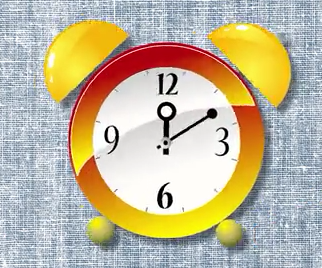This is Everyday Grammar. I'm Kaveh.
欢迎收看《每日语法》栏目,我是卡维。
And I'm not not Lucija.
我并非不是露西佳。
Lucija, that's a pretty weird introduction. Are you trying to use the double negatives?
露西佳,那样介绍很奇怪。你是在试图用双重否定吗?
Well, I would like to say that I'm not unfortunately using double negatives, but I am.
噢,我想说不是不幸地使用了双重否定,但我确实是用的双重否定。
I can see that. Well then, can you tell our viewers what double negatives are?
我明白了,那么。你能跟观众讲讲双重否定吗?
Sure! There isn't no other way. A double negative is when you use two negative words in the same clause of a sentence.
当然!没有其他办法,双重否定是指在同一个从句中用两个否定词。例如:
There isn't no other way.
没有其他的办法。

Today we will talk about two types of double negatives. The first type is when two negative words for a weak positive statement.
今天我们讲两种双重否定句,第一种是用双重否定词表达微弱的肯定,例如:
We can't not go to sleep.
我们不能不去睡了。
Time is not unlimited.
时间不是无限的。
The second type of double negative is when two negatives form a stronger negative. This typically happens in casual conversation.
第二种是用双重否定表达强烈的否定意义,在比较随意的对话中较为典型,例如:
I don't know nothing.
我什么都不知道。
I can't get no answers.
我不能得到任何答案。
You should avoid this type of double negative in formal situations.
在正式语境中,要避免类似用法。
You probably would not want to say, "I don't know nothing," in a school paper.
你可能不希望在学校论文中用I don't know nothing这种表达。
Hmm, "I don't know nothing." I sometimes use that myself.
嗯…"I don't know nothing",有时候我也这样用。
But now Kaveh, you do know something! Something about double negatives.
卡维,但现在你确实知道一些事情,关于双重否定的用法。
And that's not not Everyday Grammar.
以上并非不是今天节目的全部内容。











